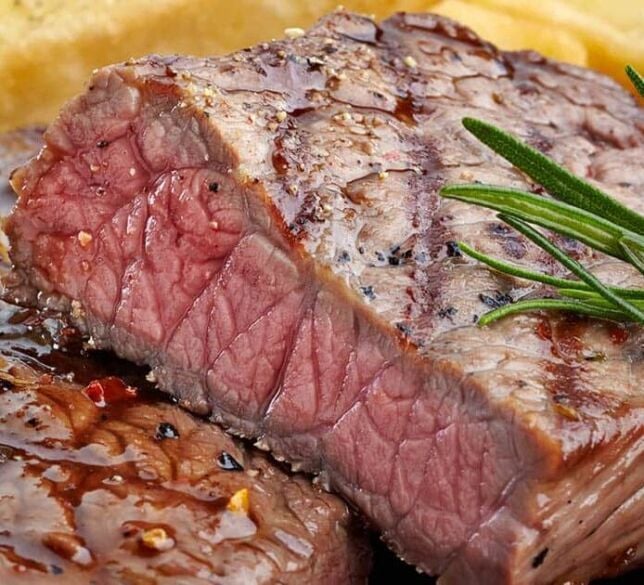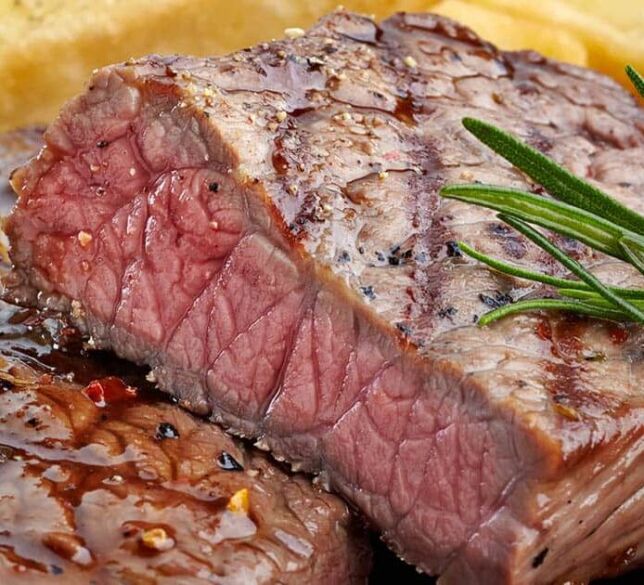The essentials of cooking good steak

The tenderness of the meat depends, firstly, on the marble oils it contains, and secondly, on the type of binder textures. A third and very important issue that affects tenderness is the 'aging ' of the meat. Meat, like cheese and wine, is a product that increases in flavor over time.
METHODS OF REST
There are two types of relaxation methods:
Dry aging and wet aging.
Two things happen in the meat as a result of resting. First, the meat becomes incredibly soft and their dispersion on the tooth improves. This state of disintegration on the tooth is called the grain of the meat. In other words, the better the grain of the meat, the better the quality.
The second thing aging does is add a wonderful flavor to the meat. These are formed by the following interactions. During resting, the enzymes in the meat break down the long muscle fibers in the meat, making the meat easier to chew. On the other hand, protein molecules are broken down into amino acids, which is what gives the flavor.

DRY REST
In this method, the whole beef carcass is hung in the cold room and kept for up to six weeks. Three weeks is enough to soften, but over the next weeks the flavor increases tremendously.
A cold room has to have some basic features. First of all, the cold temperature should be between 1Co and 3Co, that is, a little above the freezing point. The reason for this is to prevent the formation of bacteria on the meat. This is a very important and vital point. The second required point is the humidity of the room: it has to be between 80 and 85 percent. Third, the need for cold air to circulate around the carcass constantly. By placing a propeller (fan) inside, it is necessary to ensure that the air circulates around the calf at a speed of 1.5 meters per second. The optimal period is around 6-7 weeks. Resting is faster at higher temperatures, but then there is the risk of rapid bacterial growth. However, this method should definitely not be tried at home and resting should only be done professionally.
Meat aged with the dry method is the softest and most delicious meat. But the cost of meat is also increasing drastically. During dry resting, a hard crust forms on the top of the carcass and a serious layer of blue mold, one or two inches thick, forms. This moldy crust needs to be scraped off. In addition, the carcass loses about 20 percent of water in dry humidification and shrinks. When the removal of the mold and hard layer on the surface and water loss are taken into account, approximately 35 percent weight loss, ie wastage, occurs.
WET REST
In the wet resting technique, which was developed in the seventies, the carcass does not lose any since there is no mold, surface hardening and liquid loss. Therefore, it is a much more economical method. In addition, the resting time is short and the process is simple. The meat placed in the packaging nylon is vacuumed and left to rest in the refrigerator for three weeks. At the end of this time, the bag is cut off and the result is a tender meat. There is no difference in softness between them and dry resting, but their flavors are incredibly different.
TO COOK PERFECTLY
With this much knowledge, we can now all recognize a good steak with our eyes closed. But just as important is cooking the steak perfectly on the grill. So what does it mean to cook 'perfectly'?
The perfect steak is a steak cut 5 or 7 cm thick, not battered, completely stripped of fat, caramelized on the outside, but red in the middle and slightly warm. So it's a very rare steak in the middle . Overcooked or undercooked extremes should be avoided. A rare steak is cold in the middle and comes with a rubbery tooth and protein flavor. Well-cooked steak is not considered a steak in the gastronomy world. This type of steak gives a more corrugated cardboard flavor.
Now let's get to cooking. The first thing you need to do first is take the steaks out of the refrigerator two hours in advance and leave them at room temperature. In this way, you will make it easier to cook the middle part of your thick steak. Meanwhile, remove any visible fat on (but not inside) the meat. This is very important because the oils that will melt on the grill drip onto the fire and catch fire and soot on the meat. This both worsens the color of the cooked meat and gives it an unnecessary and unpleasant odor.
Light your barbecue 45 minutes beforehand. The temperature at which the meat will be cooked must be very high (330C). To understand this, bring your hand close to the fire and count to 1. If you can still hold your hand, it's not hot enough. The steaks will stick when you place them on the pre-oiled grill. After 2-3 minutes, turn them with tongs as soon as they let go. Repeat this flip process twice and cook for a total of 10 minutes. Press the tongs into the steak to see if it is cooked.
Attention! Do not insert cutlery, as holes in the meat cause water to leak out.
MAJOR MISTAKES IN THE GRILL
Never use battered steak. Because their middle parts will be very cooked, so they will be like belts. Prefer thick meat.
Do not salt steaks before grilling. Salting prevents the surface from browning.
Dry the steaks thoroughly with a kitchen towel before placing them on the fire. Otherwise, the effect of cooked in water will appear, not grilled on the surface.
If you want a real 'beef' flavor, don't marinate the steak. If you must, 'papaya' and 'pineapple' juices are very good in this regard.
If you're going to cook your steak in a non-stick pan, still follow similar rules.
Source: https://www.hurriyet.com.tr/iyi-biftek-secmenin-ve-pisirmenin-esaslari-bolum-3-270963
